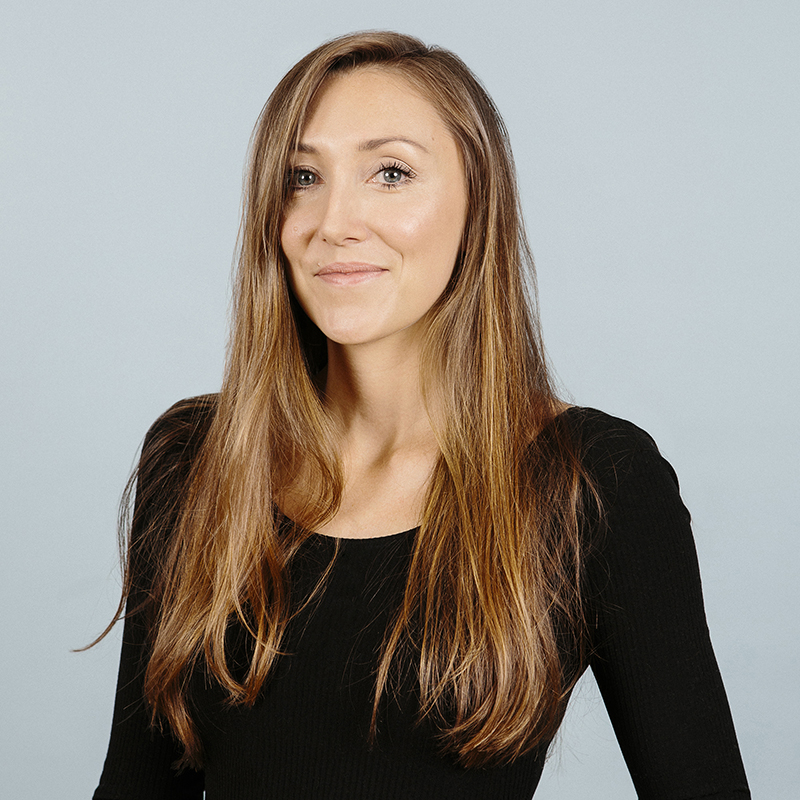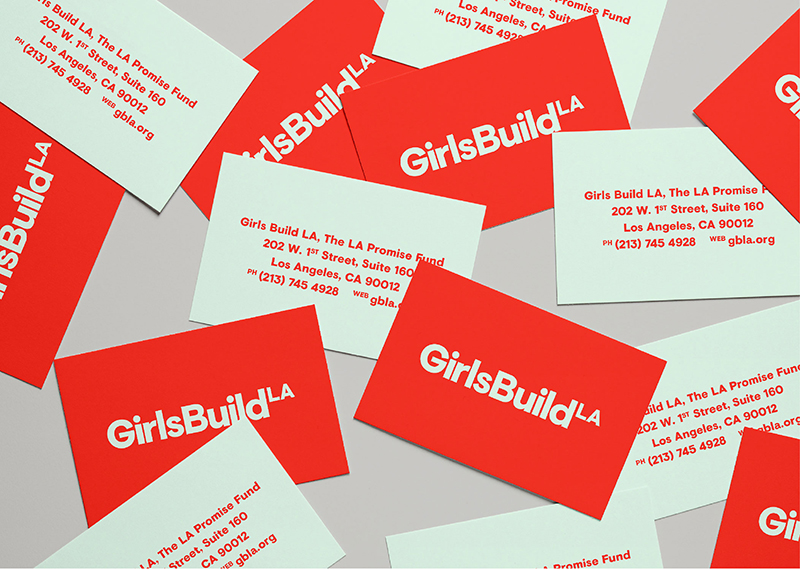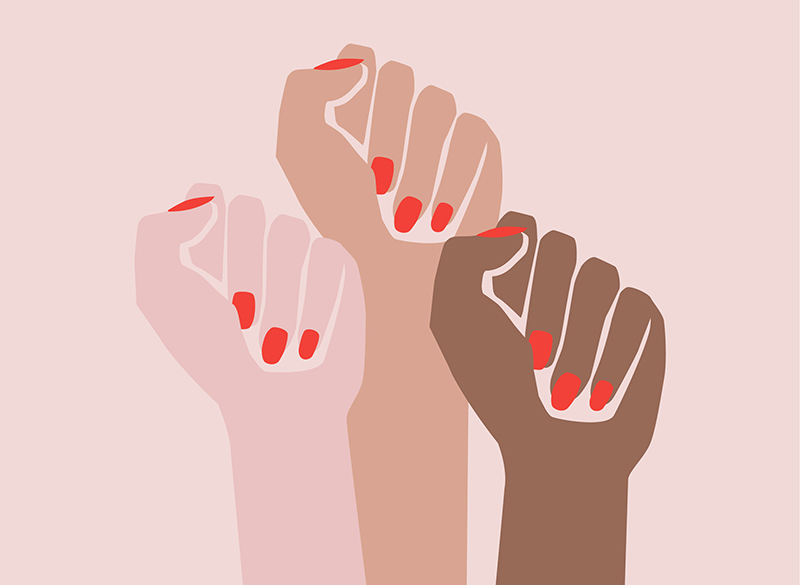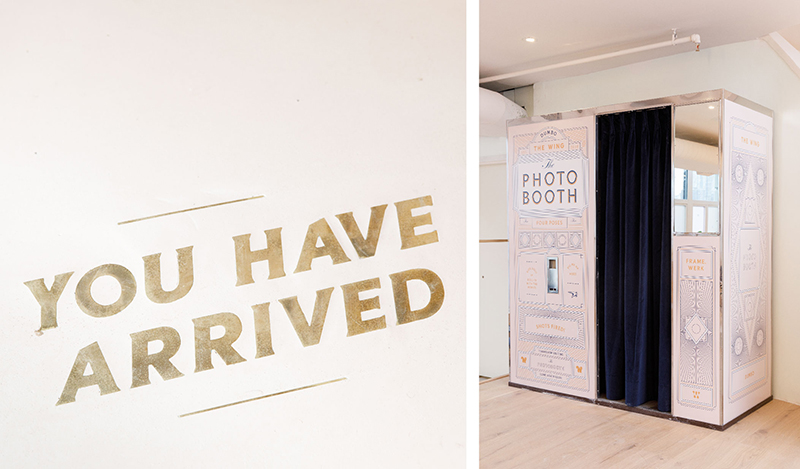
This interview is part of an ongoing Design Observer series, Chain Letters, in which we ask leading design minds a few burning questions—and so do their peers, for a year-long conversation about the state of the industry.
In March, we celebrate Women's History month and how to better design for inclusivity.
Deva Pardue is a Brooklyn based graphic designer. Originally from Ireland. She is currently Design Director at The Wing, a network of co-working and community spaces for Women. Prior to that that Deva worked at Pentagram in New York from 2012 to 2016 under the direction of Emily Oberman. In 2016 Deva founded For All Womankind, a design initiative for fempowerment. Some of her past client's include the Minneapolis Institute of Art, NBC, Bike New York, and Girls Build LA. She has received awards and recognition from Communication Arts, HOW Design, and the Type Directors Club.

Business cards for Girls Build LA branding project
Which woman has influenced you the most in your life? She doesn’t have to be a designer.
Always a hard question to answer! So many women have influenced me in different ways. From an emotional and character-building standpoint, my grandmother and mother, of course, had a big impact on me. From a more inspirational perspective, I'd have to say Sinead O'Connor and Paula Scher.
As a teenager growing into a young woman, Sinead's very public and brave speaking out against the Catholic Church and for women’s rights made a big impression on me. I grew up in Ireland, where I attended an all-girls secondary school and the local priest would visit my primary school to take the confession from ten-year-olds. My grandmother was also one of the first divorced women in Ireland; a situation that caused a lot of tension in her life and my father’s. That said, the problems with the Catholic Church and a woman's place in it were very close to me, and Sinead's voice, despite her problems, really stood out and cut through a lot of the same old bullshit—it was empowering.
In terms of my college years and early career, Paula Scher was a woman I definitely put on a pedestal and still do. She's obviously a huge design hero and I realize it's expected of me to name her, but honestly, she inspired me so much. Not even particularly through her design work—more specifically as a young woman. The thing about Paula that I noticed very early on, seeing her speak at AIGA events as a student, was her calm confidence—the way she carries herself with complete comfort and the way she speaks so inspirationally, but not in a cliché way. She's an unapologetic realist who speaks with intention and complete authenticity. I later had the privilege of taking her portfolio class at SVA and working on a couple of projects with her at Pentagram during my time there and have been endlessly impressed by how she talks about her work. She always seems fearless no matter what the situation is or who she’s up against. She's the embodiment of a woman with something to say and nothing to prove.

Femme Fists Illustration, For All Womankind
The Guerrilla Girls, a group seeking to expose sexism in the art world, refer to themselves as “feminist activist artists.” When, if at all, is it a designer or artists’ responsibility to engage in political discourse?
I think the if and when are completely personal. I could say that we all have a responsibility but I don't believe that being an artist or a designer by definition makes you an activist. I think the responsibility arises when something hits you on a personal level and comes close to home, and you have something relevant to say—then you should use your art to express that rather than keeping it inside. As designers, we have the tools to communicate in the most immediate and effective ways. We have the opportunity to not only do good, but to mobilize others to do good. That's an opportunity that should be taken advantage of.
I don't believe that being an artist or a designer by definition makes you an activist. I think the responsibility arises when you have something relevant to say.
What advice would you give to a young woman today? Why?
I recently read a quote from the late Shirley Chislom that has been stuck in my head ever since: "If they don't give you a seat at the table, bring a folding chair." It says so much, so simply, and I think it's great advice.
AIGA’s Women Lead initiative is launching Double or Nothing—a campaign to double the number of women in leadership roles in the creative industries within the next two years. What are you doing in advocacy for women in the workplace and how can it be improved upon?
Well, I only work with women now! Haha. One of the reasons I joined The Wing full-time was to make advocating for women my full-time job. I have the opportunity to do so in all aspects of my work here. I'm hiring and mentoring young female designers in an environment that empowers them, and our work is all in a joint effort to create space for women to gather together and support one another in their personal and professional pursuits.
Over the past five months, I've hired three women in Design and contracted more. I want to create space for more female designers to grow into leadership roles. There are so many female designers in New York but so few in Director level positions. I want to give them a work environment that lifts them up rather than making them constantly play catch up with—or prove themselves as competent as—their male colleagues.
I want to give women a work environment that lifts them up rather than makes them constantly play catch up with—or prove themselves as competent as—their male colleagues.
As well as making regular donations to women's organizations through my side project, For All Womankind, I've also licensed the associated image free of charge to initiatives like Ladies Get Paid who are working to advance women in the workplace.
2017 has been called the year of the woman by many; now 2018 has been given the same name from outlets like CNN to U.S. Senator Dianne Feinstein. From a design perspective, what makes you hopeful as we look toward the year ahead?
The fact that you're asking these questions makes me hopeful! There are many contemporary design publications contributing to this dialogue right now, as well as creative meet-ups and mentorship initiatives for women like Ladies, Wine & Design and the emergence of platforms like the twitter profile directory Women Who Design These all give me hope, but hearing from long respected outlets such as Design Observer and the AIGA make me particularly optimistic. With the established and the emerging voices united in a joint effort to bring about change, we'll really be able to make an impact and ensure a better future for women in design.

Brass concrete inlay and photobooth at The Wing Dumbo

Wrap for The Wing's pop-up food truck
From Rhea Combs: How does your worldview influence the work you choose? And how does that perspective affect your design aesthetic?
In every way! My worldview is pretty undefined, but values that are important to me as a person are kindness, curiosity, and purposefulness. Being a designer isn’t what defines me and it isn’t the only thing that makes me happy so I try to choose work that I can learn from; work I find inspiring, interesting, and meaningful. I'm also a realist and I know that we all have to do things we don’t want to every now and again, but my philosophy in those instances is first, do no harm.
How does that affect my aesthetic? Well, I'm not sure I have one really, or at least it's flip-flopped over time. And I like that—I'm of the belief that design aesthetic should be informed by the project at hand and shouldn't be self-serving. Purposefulness is key!
Next up: Deva asks director at Imaginary Forces, Karin Fong: How, if at all, have recent political and societal events changed the way you think about and approach your work?.
